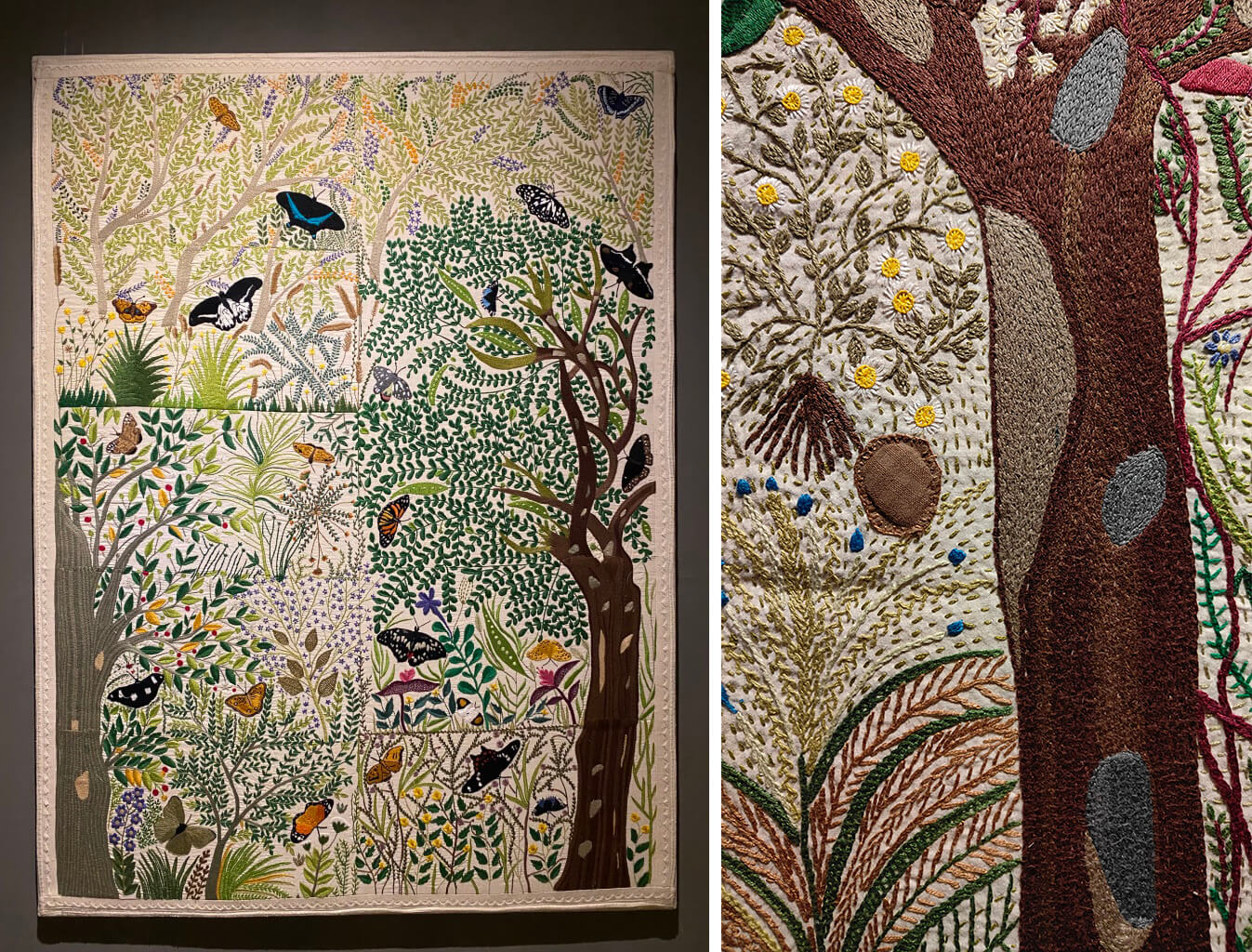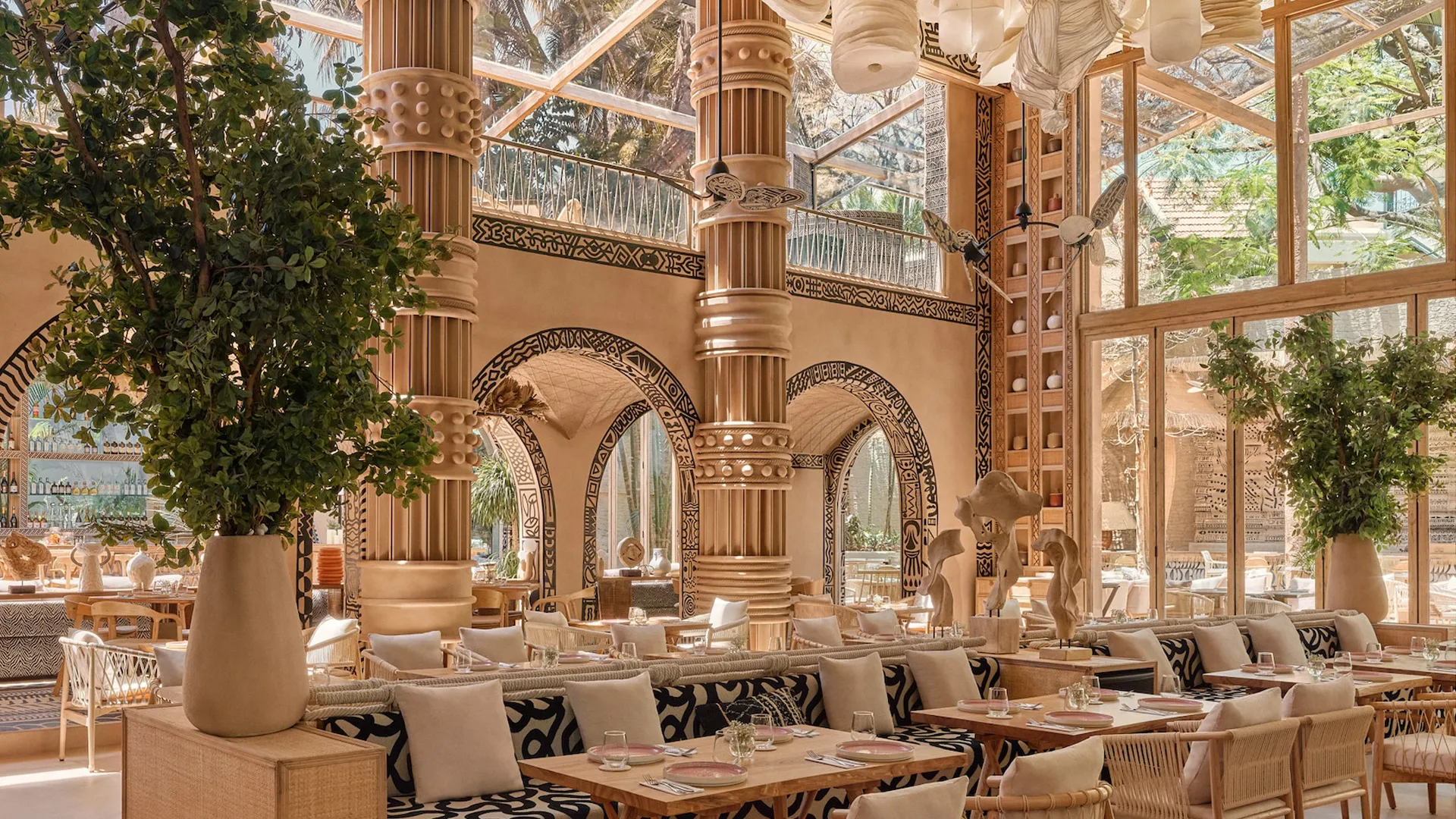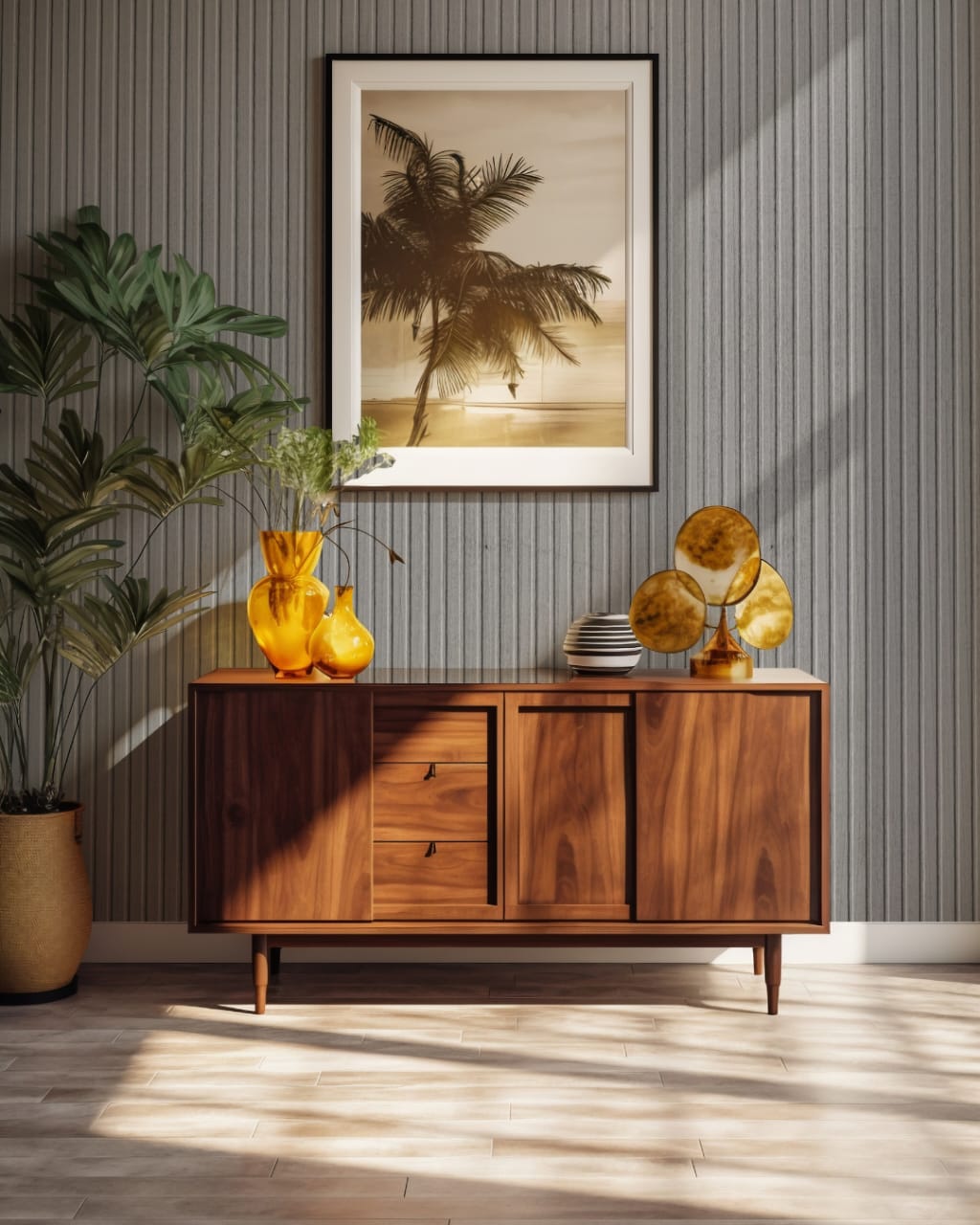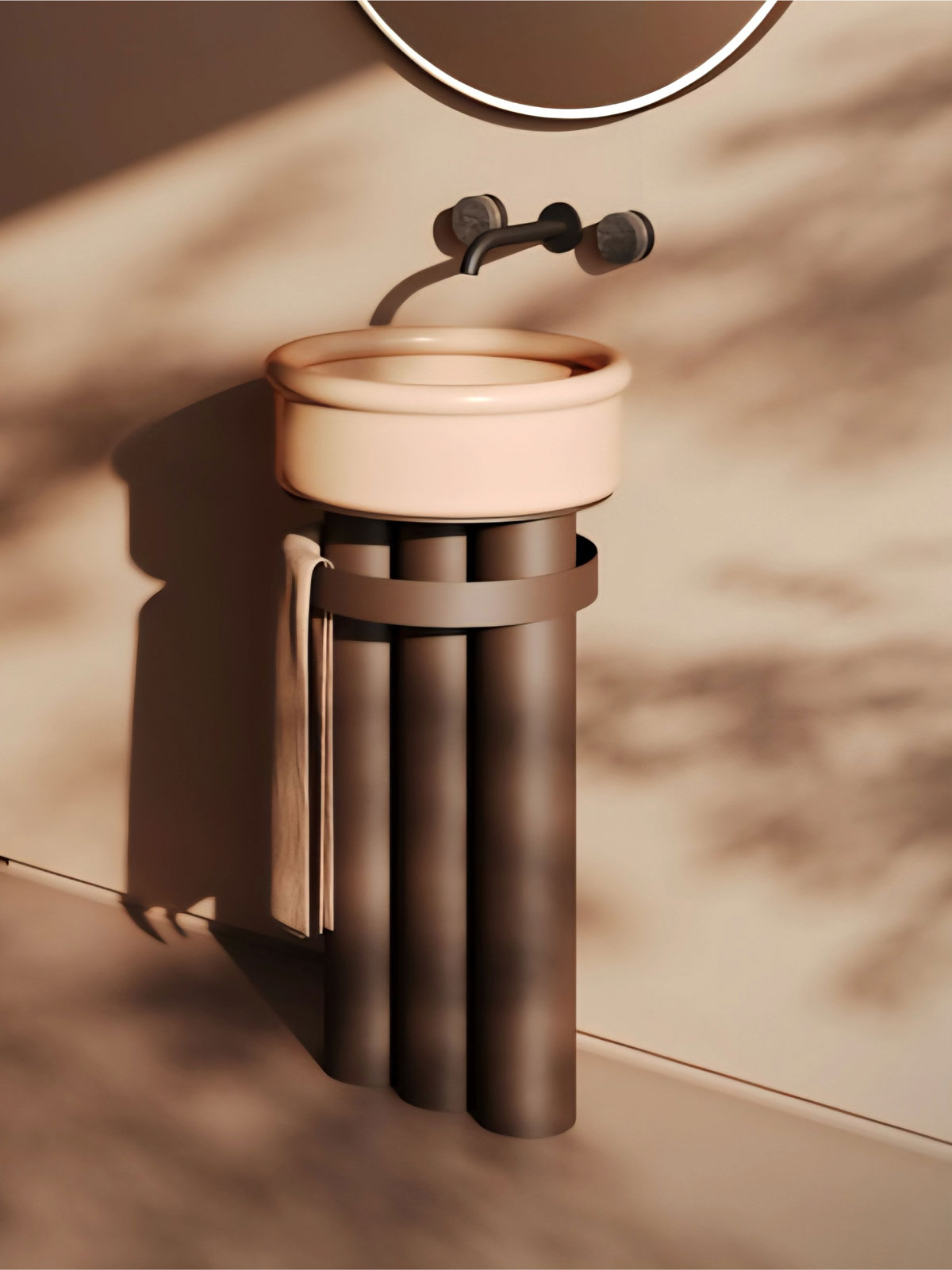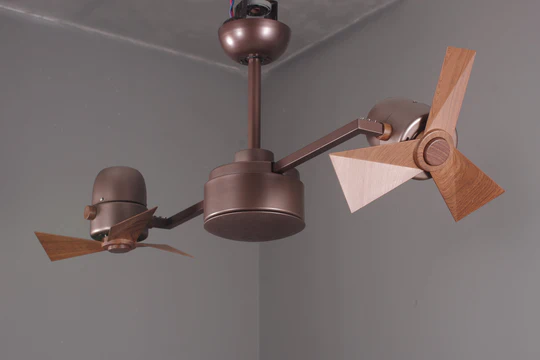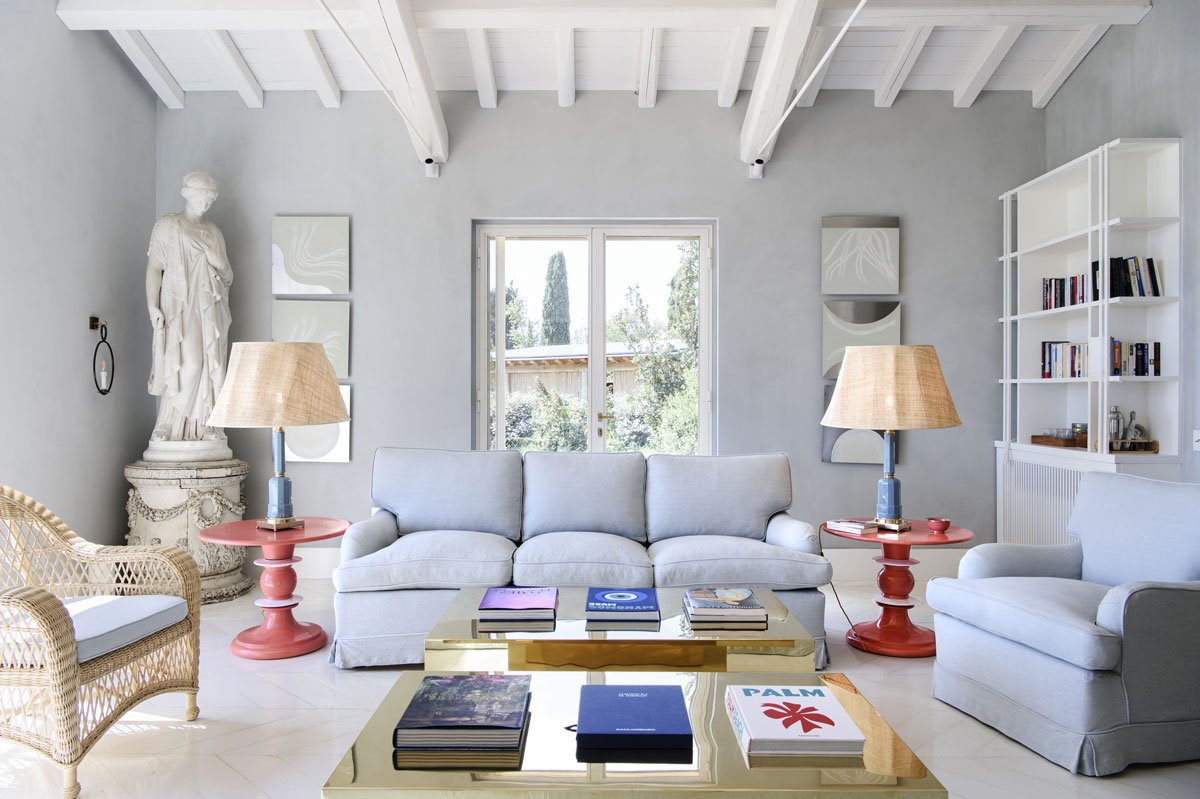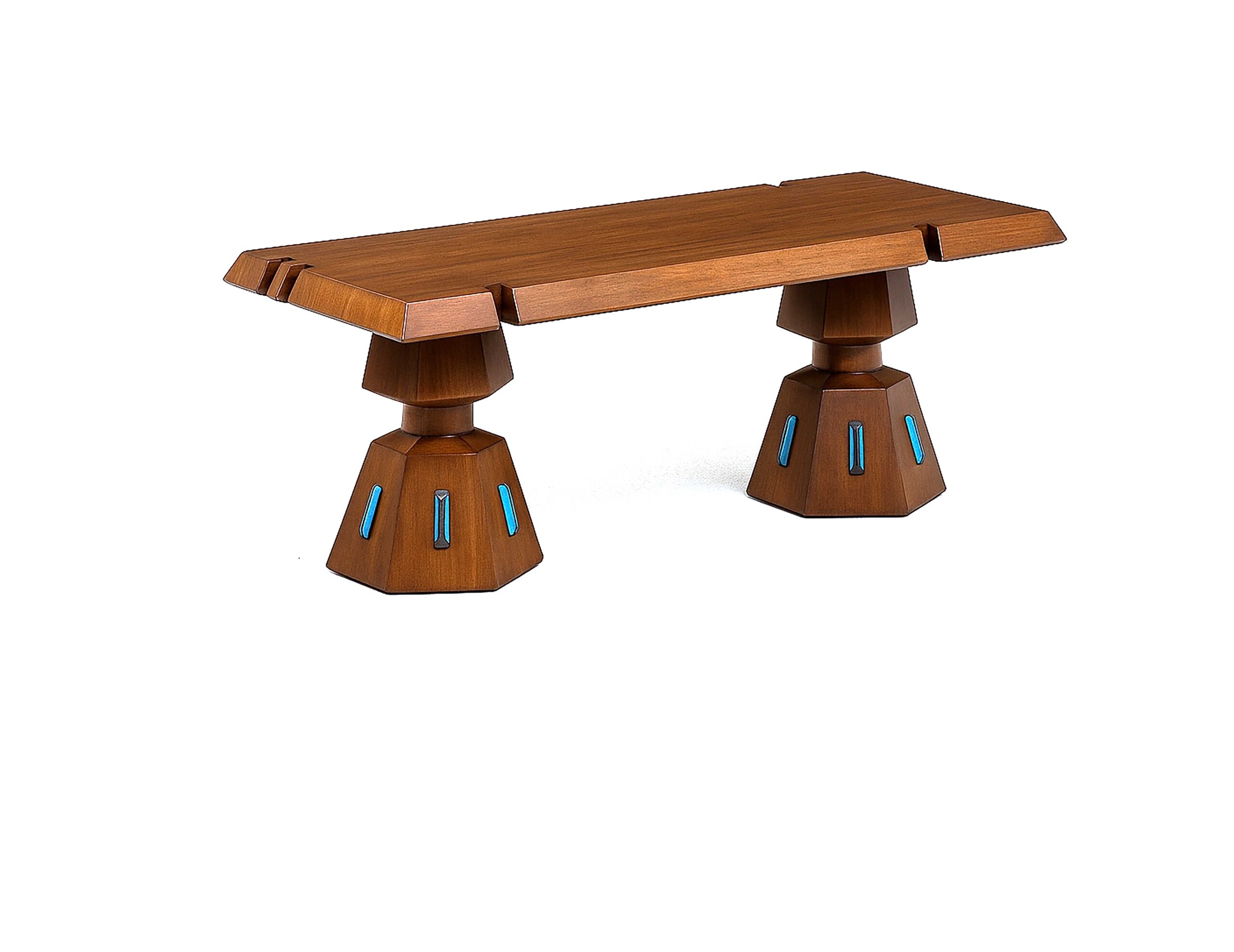Upon entering SURFACE, an exhibition in Jodhpur’s walled city, visitors are immediately struck by the interplay between heritage architecture and contemporary textile art. Spanning three venues, the exhibition, curated by Mayank Mansingh Kaul, explores Indian embroidery and surface embellishment beyond fashion and decor. Organized by the Sutrakala Foundation in collaboration with JDH, the exhibition runs from January 15 to February 23, 2025.
Textile and Spatial Design
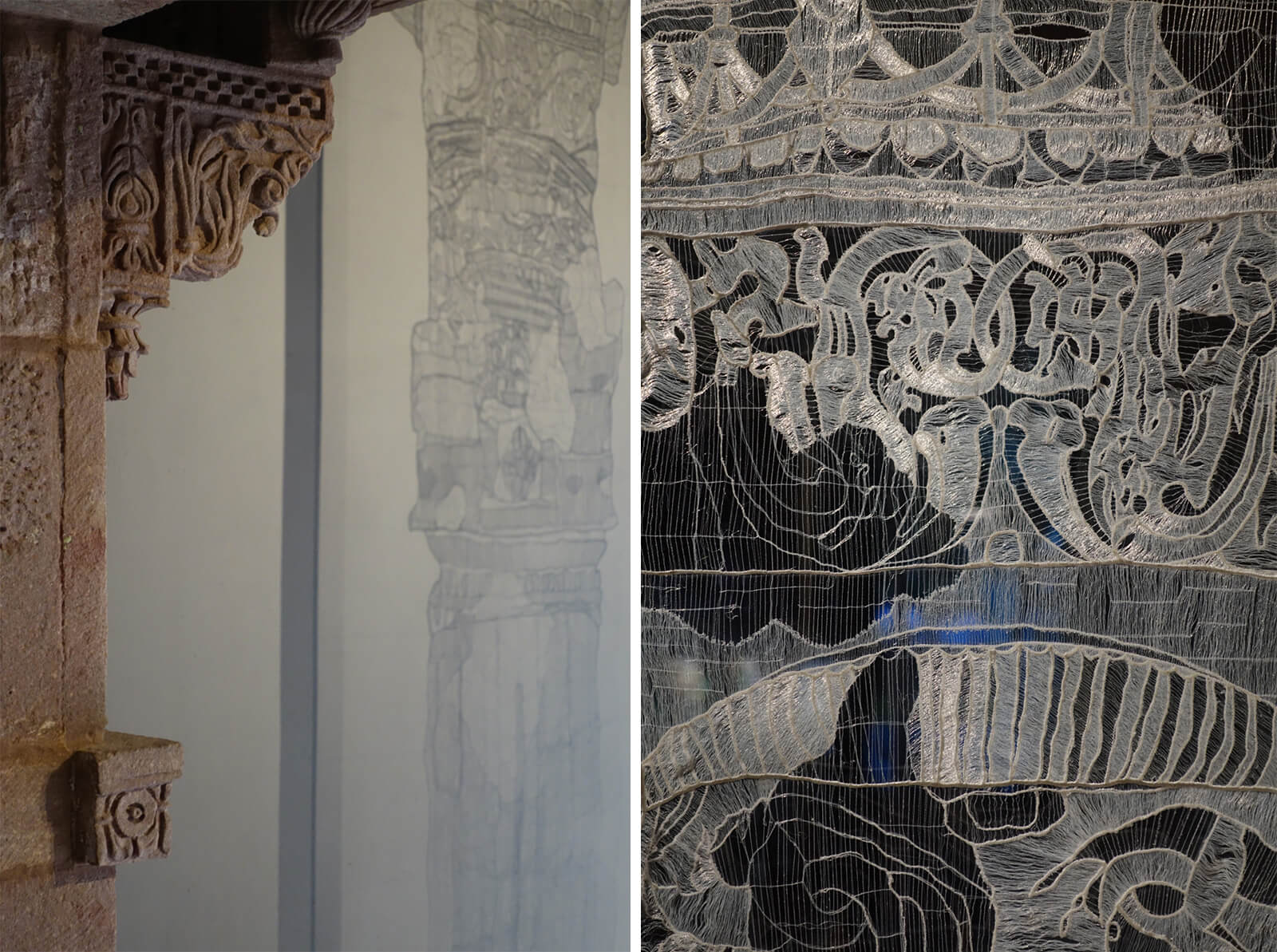
The showcase opens at Achal Niwas with Sumakshi Singh’s “Surface as Structure: Monument as Mirage” (2024), setting the tone for a deeper exploration of textile as an architectural element. Her delicate textile columns contrast with the venue’s stone architecture, emphasizing the interplay of weight and lightness. This theme continues in Chinar Farooqui’s “(Alankar)” (2024), which transforms the gallery into a tented space, reimagining its stone walls through embroidered arches.
Parul Thacker’s “The Book of the Time-Travelers of the Worlds: A Fathomless Zero” (2024) presents sound waves embroidered on translucent panels, drawing from sacred geometry. Ahmedabad-based artist Asif Shaikh’s “Sacred Geometry” (2020) dialogues with the jaali patterns of the space, questioning how textile can be architectural. Swati Kalsi’s “Night Breeze” (2015-16) and “Etch” (2015-16) reinterpret Sujuni weaving in collaboration with Bihar’s indigenous artisans, blending tradition with contemporary expression. Additionally, Kalsi’s commissioned works with the Delhi Crafts Council and artists Prikshit Sharma and Jai Prakash employ Himachali Chamba Rumal embroidery to create satirical narratives, expanding embroidery’s role as a storytelling medium.
Community and Cultural Heritage

The exhibition’s second venue, Anoop Singh ki Haveli, highlights embroidery as a communal and cultural practice. Vibrant works created by local artisans in collaboration with designers celebrate indigenous techniques. Notable displays include three ornate panels by Shrujan, a Bhuj-based organization dedicated to reviving Kutch’s embroidery traditions. The communal essence of textile art is particularly evident in Porgai Artisans Association’s collaboration with Anshu Arora and Dr. Lalitha Regi, where embroidered narratives teem with plant life and fantastical imagery.
At the final venue, Lakshmi Niwas, the exhibition takes a conceptual turn. Swati Kalsi’s “Shell” (2014) uses Sujuni weaving to evoke femininity and power. July Ancel’s “Lucknow VI” (2024) blends painting and chikankari embroidery into a surreal landscape. Shine Shivan’s “Kshetra Dhara” (2013-2025) incorporates taxidermy and found objects, questioning the boundaries of surface embellishment. Jean-François Lesage’s “Travelling Roots” (2024), inspired by Shah Jahan’s Lal Dera tent, reaffirms textile as architecture.
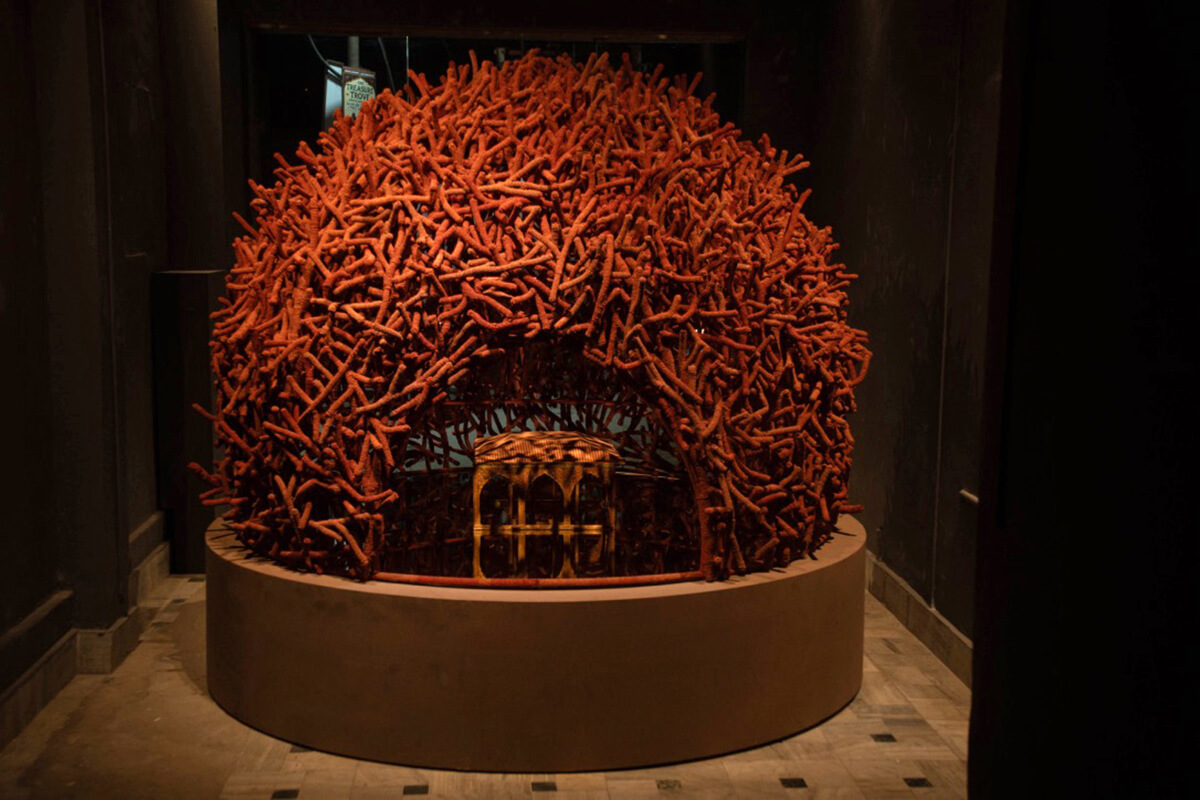
SURFACE culminates in a philosophical reflection on the sovereignty of textiles. Kaul emphasizes that contemporary Indian textiles, rooted in heritage yet innovative, are increasingly in demand. By exploring embroidery’s architectural and narrative potential, the exhibition challenges viewers to rethink textile beyond conventional applications.
Also Read: A Biophilic Haven in Puducherry.

